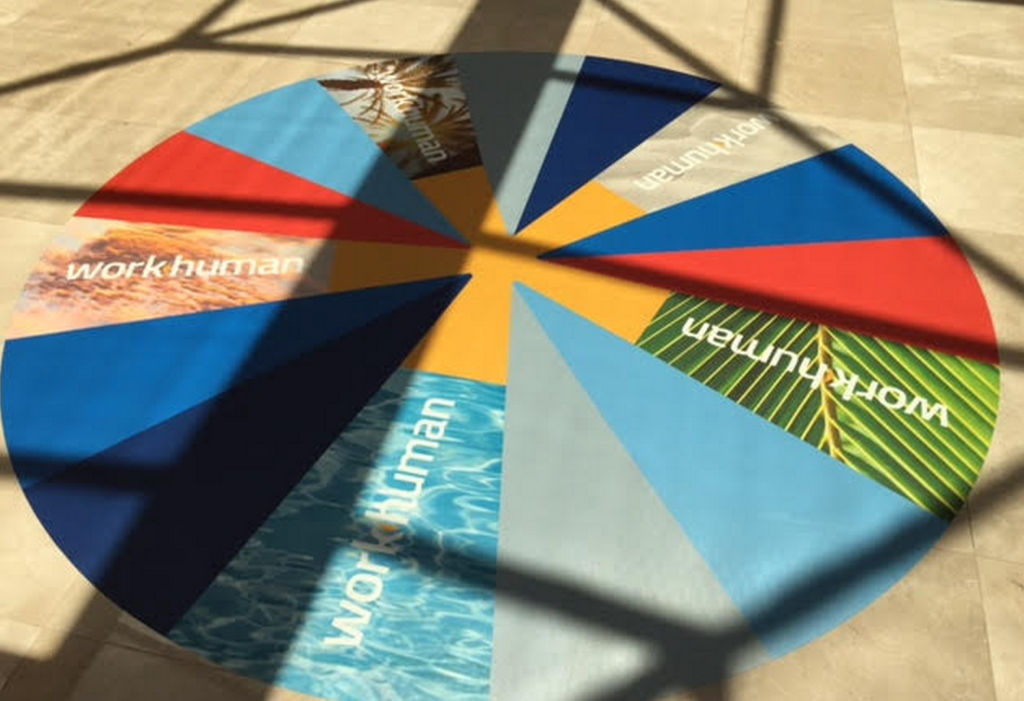In past years, Globoforce ran a user conference that looked typical to other companies their size. Their best customers would attend, share best practices, get some product previews, and have some fun. It would hopefully involve a nice location, too. After all, for the hardcore administrators and users of the product, it might be the only conference they attend for the year.

That’s not a bad deal and it takes a lot of work to pull off.
This year, Globoforce took an ambitious shot at reimagining that experience and launched a new event called WorkHuman. It would bring in people who overwhelmingly weren’t customers and be a bigger brand play for the company.
They invested big and got more than 500 attendees to come out for their inaugural event. Here are five things I think an HCM company could learn from WorkHuman if they were going to rethink their own user conference:
1. Have a provocative point of view
WorkHuman was built around the idea that the emotional connections you make at work matter and that purpose and meaning affect employees in profound ways. Your employees are people who bring their whole selves into work and you should treat them that way.
You may think that’s bullshit. And if you do, you should probably avoid WorkHuman like the plague. There are plenty of events that eschew that for a rational or robotic approach to HR.
But the people I chatted with loved the concept. They didn’t know what to expect, but they came looking for an answer that was different from what other venues offered. Committing to the idea and building an agenda around it was risky, but it cemented attendance for a large portion of the people I chatted with.
2. Think about the conference experience
One thing I really appreciated about WorkHuman was the structure. It didn’t feel like they were trying to cram too many sessions into the two days they had. There was time for networking and built-in downtime that still kept attendees engaged and refreshed throughout the day.
Not every conference can (or should) run from 7 a.m. to 5 p.m. People coming to a conference like WorkHuman aren’t looking to beef up their certification hours.
The way the conference was structured matched the brand and the message being presented in the content. Your conference doesn’t have to be like WorkHuman, but have you thought about how your event is structured and the message it sends to attendees? You probably should.
3. Open up the big tent
It may have just been some sampling bias on my part (Globoforce may have some information they can share later to tell us about the attendee mix), but I was interested in the diversity of attendees.
I met managers and leaders of organizations outside of HR. Another person mentioned they talked to a librarian. And yeah, there were HR people there, but it was clear there was something for anyone who wanted to be part of a work revolution.
The keynotes and the content really pushed this for me. Although I had seen a few of the keynoters at HR conferences, many are people who frequently speak to broader business audiences as well.
4. Remember the tactile part of your brand
Putting on a conference like WorkHuman isn’t an inexpensive venture. Not knowing how many attendees will come to a first-time event can be stressful. It’s easy and tempting to cut corners with your in-show presence. After all, everyone knows where they’re at, right?
This may seem like marketing agency bias — and it partially is — but we’ve been preaching about the power that the in-person experience can give to a brand, and I like pointing out when organizations get it right. There were multiple ways people could experience WorkHuman from a tactile perspective (visually, physically, and, yes, even through the soundtrack). It was all in place for a great brand experience.
5. Don’t forget your customers
This seems obvious, but I’ve seen a few instances where a user conference attempted to expand its scope beyond its customers. Unfortunately, these conferences often lose sight of a really useful part of the original purpose.
Globoforce had a big event for their customers the day before WorkHuman. I didn’t go (it was for customers), but the customers I did speak to really appreciated it and it sounds like it went really well.
As an outsider and a non-user, I would have appreciated a bit of attention talking about some of the more remarkable features of the technology platform or hearing from customers. I think there is a place for both that and an ambitious agenda.
I also heard that Globoforce is looking to extend the WorkHuman idea into a year-round initiative, with the conference being a capstone event to a year of thought leadership built around it. That will be fun to observe.
It takes a lot to melt my cold, cynical heart about whether the ideas posited by WorkHuman can become a majority point of view in the HR community. It will be fascinating to watch how this event evolves and if it can create a pocket of evolutionary thinking.


